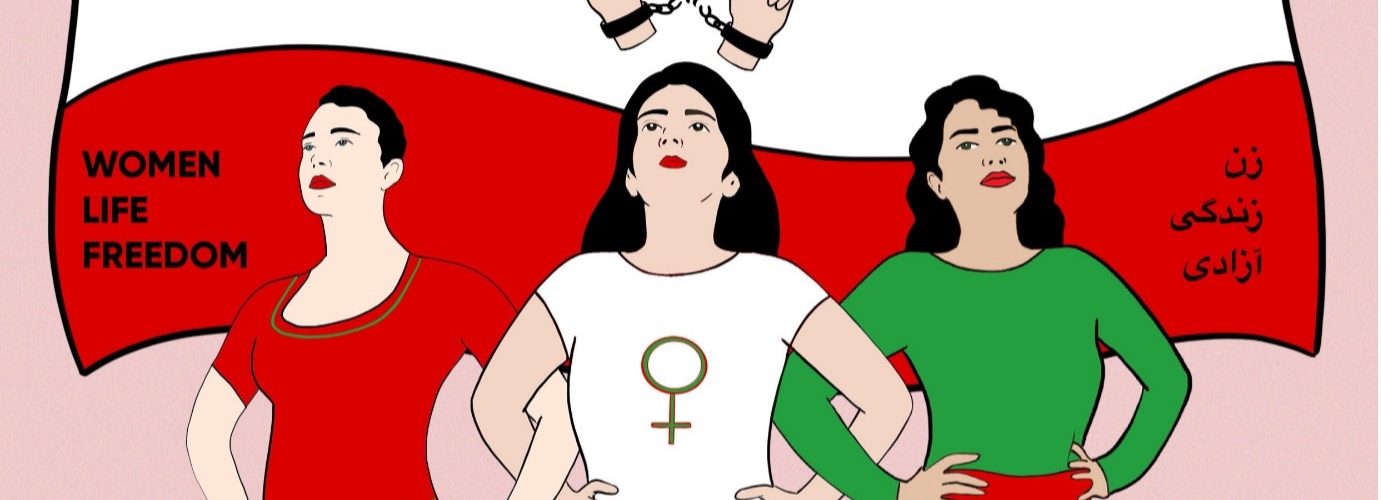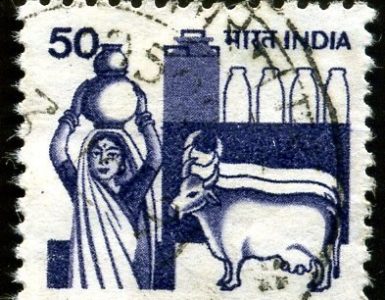Pardis Asadi Zeidabadi
The protests in Iran have unique characteristics that differentiate them from previous protests. Public support for this movement is more prevalent than any other protest since the Islamic Revolution in 1979. People of different gender, ethnicities, religions, class, political perspectives and ages have participated in the protests to challenge the red lines imposed by the state. Importantly, people from different backgrounds have participated in self-organized protests without the direction of particular leaders.
This inclusivity and diversity is of fundamental importance as the history of Iran shows, where civil society has not yet fully developed. The state has often considered the expansion of political and civil rights as ‘un-Islamic’ and, as such, threatening to the foundation of the state’s ideological and political bases (Abootalebi, 2000). The inclusivity and diversity involved in the movement is a key factor that contributes to civic culture and a step toward democracy (Tohidi, 2016).
Democratic values, such as pluralism and tolerance of diversity, have developed within this movement while the effective grassroots women’s movement for improving women’s rights and building a secular and democratic political state also contributes to the process of democratization.
Women’s position in Iran
Women’s rights are severely restricted in Iran. Iranian women experience varying degrees of discrimination in many aspects of their personal and public lives, mostly driven from legalised gender inequalities.
While patriarchal systems have origins beyond a specific religion, the Islamic state and practices in Iran have greatly boosted them. The restriction and erosion of women’s rights has increased since the 1979 Revolution, when women’s rights were among the first targeted by the Islamic regime that took over the country.
In fact, in the context of Iran, the identity of the Islamic state is strongly linked to women’s bodies and the constructions of gender. The Islamic state of Iran has highlighted gender as part of its global image. The government stresses that men and women have different roles and reinforces the necessity of modesty to promote its own political interests (Asadi Zeidabadi, 2022).
In particular, for the Islamic state, the hijab signals this redefinition of the gender structure and Iranian women play an important role in representing the Islamic state’s identity. The female body is the focal point for political project of the Islamists (Papanek, 2019). Control of women and the female body is one of the most important project for the state. This suggests women have been the most deprived group and have been subjected to the worse human rights’ violation (Asadi Zeidabadi, 2022).
Women’s rights and legal barriers
There are a number of governmental state regulations that clearly discriminate against women. Based on Islamic law, the life of a woman is considered literally worth half the life of a man. A woman’s blood money (money paid in compensation to the family of someone who has been killed) is valued less than a man’s in murder cases. Girls get half their share of inheritance compared to that of their brothers. In court, women’s legal testimonies are valued less than a man’s and, in some cases, worth nothing unless corroborated by a man.
The hijab became obligatory for all Iranian women from April 1983. Since then, all women have been legally obliged to wear hijab in public, even non-Muslims and foreigners visiting Iran. This law is used by the state to control women’s bodies and has been promoted as one of the most pervasive and visible indicators of the Islamic state’s gender policy.
Abortion is banned for women and is illegal. The state restricts public health-care providers from offering free contraception. Buying contraception from private clinics is too expensive and unaffordable for many Iranians.
Women musicians and singers can be prosecuted, if they are deemed “immoral” under Islamic law. It is notable that the definition of morality is pretty vague in the legal system. Similarly, women’s public dancing is illegal in Iran.
Polygamy is legal in Iran, and in the legal framework divorce is only a right for men. They can divorce their wives with a simple declarations and retain custody of their children. Conversely, women have very limited right to petition for a divorce and it is difficult (if not impossible) for mothers to keep custody of their children.
According to Article 1117 of the Islamic Civil Code, a husband may deny his wife the right to work if he thinks that her job is incompatible with his or his wife’s dignity, or with the interests of the family. This is one among many other discriminatory laws have contributed to women’s low labour force participation (only 17% of women in Iran participate in the labor force , one of the lowest worldwide) despite their exceptionally high rate of participation in higher education (more than 60% of university graduates in Iran are women).
Women cannot receive a passport without the written approval of their fathers, husbands or grandfathers, or uncles. The right to travel overseas is also restricted as married women are not allowed to leave the country without their husband’s (or the local prosecutor in special cases) consent. No surgery can be performed on women without the approval of their male “guardian.”
From this quick glimpse into legal position of women in Iran, it is clear that they live in a secondary position to men.
Iranian feminists and women activists
While the activities of feminists and women activists have been largely suppressed by the Islamic regime – with many women rights activists either arrested, sentenced to lengthy prison terms or forced to leave the country – they have been steadfast in challenging the existing inequalities. Feminists and women activists have been constantly questioning structural sex and gender discrimination while seeking change via different forms of activities, protests and efforts including One Million Signatures, My Stealthy Freedom, White Wednesdays, and Girls of Enghelab street campaigns.
The government’s arrests and repression of feminists and women activists is significant because it indicates that the State is fearful of the impact of their resistance, and that they are seen as a real threat to the regime’s authority.
The characteristics of the latest protests in Iran
For the first time on a large scale, Iranian men have accompanied Iranian women to advocate for their rights. This is an important moment for solidarity of Iranian people, who fight for women’s rights regardless of their gender and this suggests that gender egalitarianism has culturally improved in Iran despite all legal barriers. Standing with women, shoulder to shoulder, and saying the slogan ‘Women, Life, Freedom’ has the potential to educate and awaken individuals to inequalities in both private and public spheres.
This feminist uprising has inspired people from other marginalized backgrounds including ethnic minorities (such as Kurdish, Turkish and Baloch), gender and sexual and religious minorities to join to the protests and call for a fair society. These minority groups who have been marginalized and suppressed by Islamic state for many years and have had enough of intolerance for differences are now challenging the system. Along with Iranian women they call for a democratic system that appreciates pluralism and diversity. Notably, despite the previous protests, the latest protests and movement is not a reform movement seeking to negotiate with the regime. Rather, it is a movement that calls for a fundamental change.
Unlike previous protests that took place in 2009, 2017 and 2019, this movement’s main source of discontent is neither political nor economic decisions. However, individuals from a lower economic backgrounds and different political perspectives have joined to this movement and chanting ‘Woman, Life, Freedom’. In addition, for the first time the movement ha sbecome a global movement that involves both national and international celebrities– from artists, movie stars, to athletes and social influencers – to condemn the current gender policies in Iran and indicate their support for the movement.
The Iranian diaspora’s support also play a role in the movement and millions of people with ties to Iran (born in Iran or those who are of Iranian ancestry) have staged protests in solidarity with women in Iran. For example, in an unprecedented event, on 1st Oct, Iranian diasporic communities and human rights activists launched unprecedented rallies in over 150 cities throughout the world to support protesters in Iran. Iranian academics and researchers across the globe advocate the movement and women’s right in Iran via different activities including providing a Letter of Solidarity With Iranian Women and Protesters, writing publications and awareness rises.
While people from different age groups participate in these protests, young people are on the frontline. Despite facing brutal crackdown, internet lockdowns, mass arrests, young people (school and university students) are on the streets fighting bravely and fearlessly for women’s rights and freedom. Their courage keeps the protests going and motivates other protesters to continue.
Conclusion
The characteristics of the latest protests highlight how these protests led by women and fuelled by gender inequalities can contribute to a wider process of democratisation. The feminist uprising would play a role in democratisation by increasing awareness about women’s rights. In addition, diversity within these protests, unity between women and men, the relentless participation of youth from all walks of life, and solidarity of people from different background suggest how individuals exercise diversity and tolerance. Women have inspired people from different backgrounds to call for a democratic system within which everyone is treated equally regardless of their age, gender, sexual orientation, ethnicity, religion and class.
References
Abootalebi, A. (2000) ‘The struggle for democracy in the Islamic Republic of Iran’, Middle East, 4 (3), pp. 43-56.
Asadi Zeidabadi, P. (2022) ‘Political identity: feminists and feminism in Iran’. Gender, Place & Culture, pp.1-21. DOI: https://doi.org/10.1080/0966369X.2022.2118240
Papanek, H. (2019) ‘The Ideal Woman and the Ideal Society: Control and Autonomy in the Construction of Identity.’ In Identity Politics and Women, edited by Hanna Papanek, 42–75. New York: Routledge. DOI: https://doi.org/10.4324/9780429041051
Tohidi, M. (2016) ‘Women’s Rights and Feminist Movements in Iran’, SUR-Int’l J. on Hum Rts., 13(24), pp. 75-89.

Pardis Asadi Zeidabadi, is a researcher and visiting lecturer at City, University of London. Her PhD thesis is about “the perspectives of Iranian feminists and women activists on their political identities and priorities”. Twitter: @Pardisasadi1
Header Image Credit: Roshi Rouzbehani
TO CITE THIS ARTICLE:
Asadi Zeidabadi, Pardis 2023 ‘Democracy and the Feminist Uprising in Iran’ Discover Society: New Series 3 (1): https://doi.org/10.51428/dsoc.2023.01.0002




